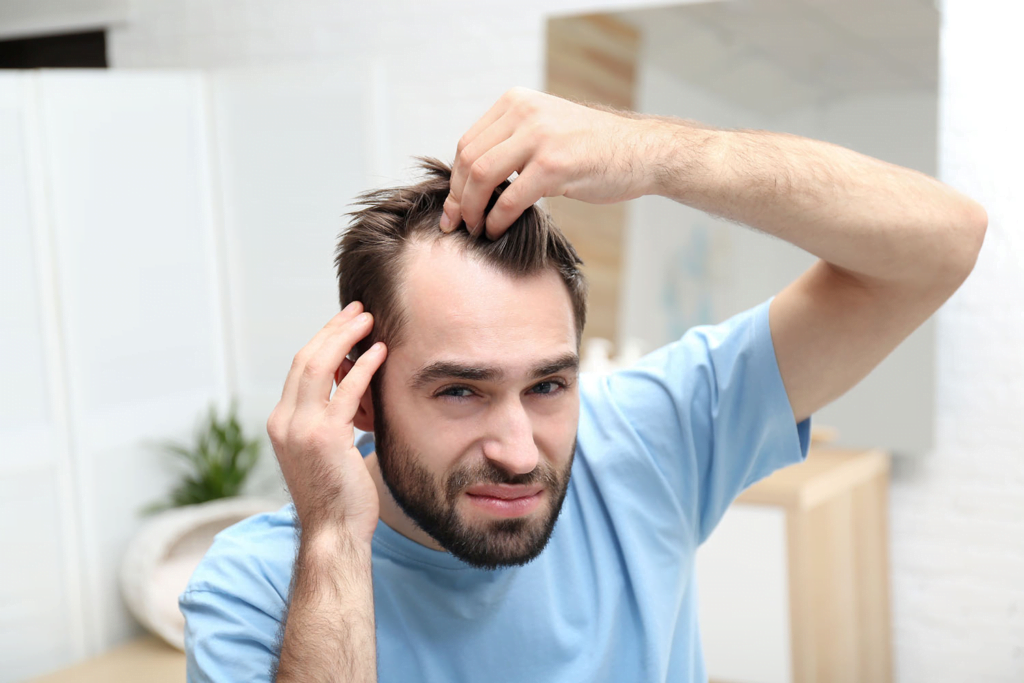Can Transplanted Hair Fall Out After 2 Years? Imagine this: you undergo a hair transplant, reveling in the promise of thicker, fuller locks. Two years later, a creeping worry sets in – are those precious transplanted strands starting to thin or disappear? Don’t fret, you’re not alone. The question of transplanted hair falling out after 2 years is a common concern, and understanding the answer can bring both relief and valuable insights. So, buckle up as we delve into the world of transplanted hair, exploring the factors that can influence its longevity and offering solutions to keep your newfound mane flourishing.
Is it normal for transplanted hair to fall out after 2 years? The answer isn’t as simple as a yes or no. Let’s unravel the mystery, together!

Understanding Transplanted Hair Loss: Beyond the 2-Year Mark
Two years after your hair transplant, the initial joy of thicker locks might be tinged with anxiety. You might notice thinning or shedding amongst your transplanted strands, sparking the unsettling question: is this normal? While most transplanted hair boasts impressive permanence, understanding the nuances of potential loss is crucial for peace of mind.
Shock Loss vs. Long-Term Concerns:
First, differentiate between two distinct scenarios:
- Shock Loss: This temporary shedding, typically occurring within weeks after surgery, shouldn’t raise alarm. The transplanted follicles, though seemingly lost, are simply entering a resting phase before resuming healthy growth around 3-4 months.
- Long-Term Loss: If shedding persists beyond the initial months, delve deeper into potential causes. This could involve:
- Underlying Scalp Conditions: Undiagnosed scalp issues like Alopecia Areata or Telogen Effluvium can impact transplanted hair alongside native strands. Consulting a dermatologist for diagnosis and treatment is crucial.
- Scarring: In rare cases, excessive scarring during surgery can damage transplanted follicles, leading to localized hair loss. Seeking professional advice for corrective measures is essential.
- Donor Area Limitations: The quality and quantity of hair follicles harvested from the donor area play a significant role. If the donor area had limited healthy follicles, transplanted hair might exhibit slower growth or eventual thinning. Consulting your surgeon for further evaluation is recommended.
- Lifestyle Factors: Stress, poor diet, and certain medications can contribute to hair loss, impacting both native and transplanted hair. Addressing these factors with healthy lifestyle choices and consulting your doctor is advised.
Remember:
- While some degree of thinning after 2 years might be due to natural hair loss patterns, consulting a board-certified hair transplant surgeon for a personalized assessment is vital. They can diagnose the cause and recommend suitable solutions, ensuring your transplanted hair thrives long-term.
Seeking professional guidance at any sign of unusual shedding after the initial healing period empowers you to make informed decisions and maintain your desired results.
Safeguarding Your New Mane: Preventing Transplanted Hair Loss After 2 Years
The thrill of a successful hair transplant can fade alongside anxieties about long-term hair loss. But fret not! By actively caring for your transplanted hair and addressing potential threats, you can significantly boost its longevity. Here’s your action plan to keep those precious strands thriving:
1. Meticulous Post-Operative Care:
- Adhere to your surgeon’s instructions religiously. Gentle cleansing, avoiding harsh products, and protecting the transplanted area from sun and friction are crucial for optimal healing and minimizing risks.
- Maintain a healthy scalp environment. Use gentle, fragrance-free shampoos and avoid scratching or picking at the scalp, which can irritate and damage transplanted follicles.
2. Embrace Hair-Friendly Habits:
- Manage stress: Chronic stress can disrupt the hair growth cycle, impacting both native and transplanted hair. Incorporate stress-management techniques like exercise, meditation, or yoga into your routine.
- Fuel your body right: A balanced diet rich in vitamins, minerals, and protein is essential for healthy hair growth. Consult a nutritionist for personalized dietary guidance.
- Consider hair loss medications: For men experiencing ongoing hair loss, medications like finasteride can help prevent future thinning in both native and transplanted areas. Discuss this option with your doctor to assess suitability and potential side effects.
3. Regular Follow-Ups:
- Schedule regular consultations with your hair transplant surgeon. They can monitor your progress, identify any early signs of concern, and provide personalized advice to maintain your desired results.
- Address concerns promptly: Don’t hesitate to seek professional guidance if you notice any unexpected shedding or changes in your transplanted hair beyond 2 years. Early intervention is key to addressing potential issues effectively.
Remember:
Maintaining healthy transplanted hair requires a proactive approach. By following these steps and prioritizing healthy habits, you’ll empower your transplanted strands to thrive, ensuring your new mane continues to bring you confidence and joy for years to come.
Hairtrans.com was founded by world-famous plastic surgeon Dr. MFO, who is an expert in facial feminization or facial masculinization surgeries, and is managed under his leadership. Would you like to have a hair transplant under the coordination of a plastic surgeon with many years of experience?
Whether you are a trans woman or a natural born male or female, if you are looking for the best hair transplant, contact us now.


